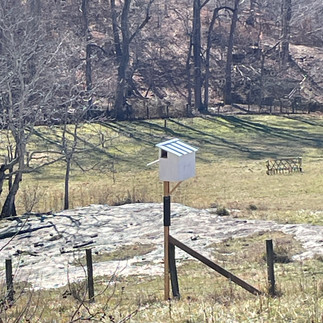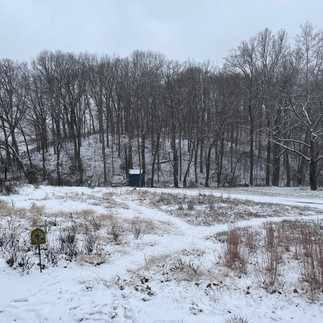Winter Water
- fcohen42
- Jan 28, 2024
- 3 min read
In his 2023 book The Power of Trees author Peter Wohlleben describes recent research in 182 Swiss forests on the source of the water that oaks, beeches and spruce trees drink in summer. Turns out the oaks and beeches use “winter water”--water stored deeper in the ground from fine pores. Spruce trees, on the other hand, tap water from larger pores closer to the surface supplied by summer rains.
Wohlleben goes on to hypothesize what benefits this confers on the tree species and forest as a whole. He also lays out the study’s implications for tree survival in the face of changing weather and climate.
Interesting stuff. But I also like it as a metaphor.
Winter water means to me the plans we make now that will not bear fruit until a future season.
In October we said farewell to the resident cattle. Without grazing pressure, the fields will show us what native seed they may still have that can compete with the settlement-era orchard grass and other typical non-native plants. Virginia Working Lands will conduct species censuses in May and late summer.
On walks we see our new nest boxes, one for barn owls and two for kestrels. They were built by Alan Will, and erected by Alan and The Clifton Institute’s co-director Bert Harris in late December. The hope is they will be homes for mating pairs to raise spring broods.
Also in December the last of the trees were planted in the Raindrop Meadow Garden–two fruiting female persimmons, and one male. We also added some bonus witch hazel, one of my favorites. Down by the creek Janet Davis of Hill House Nursery spotted an existing one with its signature red and yellow starburst flowers still attached.
In January, capitalizing on a quick shift from winter to spring temperatures, Janet and her crew launched the first salvo of removing autumn olive, oriental bittersweet and multiflora rose. Because of its prevalence in the creekside riparian areas–and we have streams diagonally crossing the entire farm–we chose stands seen from dwellings, where one would want to walk, or sit, listen, and watch. The steep banked woodland hosts multiple bird species, including the red-headed woodpecker. In summer butterflies such as the Eastern tiger swallowtail use the creek as a sheltered flyway.
The first step: flag the targets. It's not easy in winter to tell autumn olive apart from the desirable native Northern spicebush. Janet showed me how to look for differences in the terminal buds. The Northern spicebush has three small green scaled buds, whereas the autumn olive has only one that is elliptical in shape. Northern spicebush also has light-colored lenticels on its gray-brown branches.
After flagging with yellow telltales, the autumn olives are one by one cut low and stumps painted with glyphosate. The arc of the oriental bittersweet canes and the single or multiple stems of the thorny multiflora rose are horizontally cut at or near ground level and swabbed.
The warmer temps mean that the stomata of all three invaders open up to receive more of the herbicide.
Small piles of brush now await the wood-chipper.

With the invasives killed or contained, natives who like the light and moisture conditions of the woodland floor, including Christmas Tree fern, should have more room to spread.
Not on our list for removal is the ubiquitous Japanese honeysuckle. It lines the nearly perpendicular banks of the creek. Removing it could cause the banks to cave. We’ll engineer this fix another time.
The metaphor of winter water also means preparing the mind and spirit to receive the blessings of Spring.
For me that means strapping on binoculars to identify birds I'm hearing on my Merlin Sound ID app. It means reading an introductory botany textbook. But it also means doing absolutely nothing but listening attentively for the soft whisper that may be the still small voice of god.











Comments